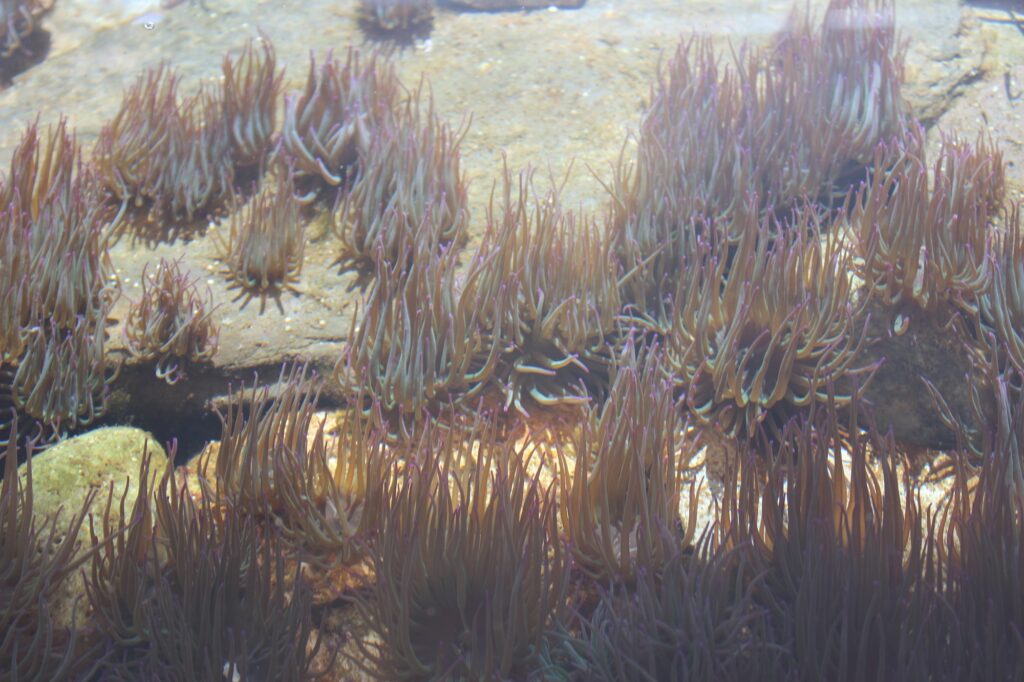Plants, which rely on photosynthesis to survive have evolved to move towards a light source; but for the first time, similar behaviour has been recorded in marine animals.
Researchers from the Marine Biological Association (MBA) have discovered that snakelocks anemones (Anemonia viridis) are heliotropic – they track the sun by pointing their tentacles towards it while remaining fixed in one place.
Anne Warner Research Fellow Dr Vengamanaidu Modepalli who leads a team studying the earliest diverging animal groups at the MBA, first noticed anemones tracking the sun when he walked past an aquarium tank at work.
He said: “One day I was passing by an aquarium with these anemones, all of them synchronously pointing their tentacles in the direction of sunlight coming from a window. When I closed the shutter, they immediately lost this response and vice versa; when the sunlight was restored, they started back pointing their tentacles towards sunlight again. This observation sparked our curiosity and led us to start this project.”
Sea anemones are carnivorous invertebrates that are close relatives to coral and jellyfish. They are usually attached to rocks or the seafloor and capture their prey such as plankton or small fish with their stinging tentacles. Like stony corals some sea anemones are photosymbiotic, they can obtain sugar from the photosynthesizing algae that live inside them as a symbiont.
Snakelocks anemones can be found in the Eastern Atlantic Ocean and the Mediterranean Sea. They can be identified by their long, bendy tentacles which are grey-brown or bright green with purple tips in colour.
In this study, researchers observed snakelocks anemones in different conditions to record light tracking and find out the reasons behind this unusual behaviour.
Experiments to examine how anemones reacted to light sources were conducted by MBA undergraduate student Eliska Lintnerova, who completed a placement at the MBA in 2021 .
Callum Shaw carried out field studies to examine the snakelocks anemones in their natural habitat were able to capture images at different points throughout the day.
They found that the anemones in their natural habitats under sunlight displayed solar tracking by pointing their tentacles at the sun while remaining stationary. The same result was recorded in lab experiments with natural light in the MBA Research Aquarium.

Next, the research team wanted to find out if photosynthesis drives the heliotropic behaviour, so they conducted additional experiments.
Some anemones were ‘bleached’ by being kept in the dark which causes the expulsion of algae. Others were given photosynthesis-inhibiting chemicals. In both experiments, the anemones no longer tracked the source of light.
The team also noted that by realigning their tentacles, snakelock anemones can reduce exposure to a light source by about 40 per cent. This could indicate heliotropic behaviour is an adaptation to prevent damage from solar irradiation.
Dr Modepalli said: “Although we understand that cnidarian (marine animals such as anemones, jellyfish and corals) hosts and their symbiotic partners such as algae have a mutually beneficial relationship, we still don’t fully understand the mechanisms and impacts on the host.”
Researchers have suggested that heliotropism in snakelocks anemones may have provided an advantage for the species to thrive in many different environments, from sun exposed habitats such as shallow rock pools to deep waters and caves where light is scarce.
“Irrespective of the functional relevance of heliotropism in snakelocks anemones, either to promote light absorption or conversely to minimise excess light uptake; we revealed how this species displays similar behaviour as plants under similar environmental pressures.”
Find out more: https://www.biorxiv.org/content/10.1101/2023.11.02.565328v1
Watch our YouTube video of snakelocks anemones displaying heliotropic behaviour.